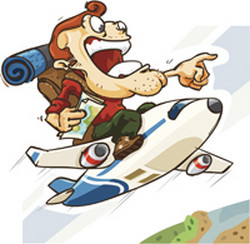Low-cost carriers change European culture
But, which comes first, the destination, the convenience or reaching the destination via aeroplane? This research project studied the budget airline space of the EU and how it affects people living in the EU. Conclusions from the EU-funded project WHERE WE FLY are many. Most importantly, the socioeconomic impact of the project is embedded in the increased understanding of how the infrastructure of low-cost airline travel might be more fully developed. This development could support, promote and facilitate opportunities for communities, individuals and businesses in the EU to build meaningful and beneficial intercultural dialogue across Europe. The researchers initially reviewed literature on LLCs. In the second phase, they took a working trip to Izmir, Turkey, to understand the dynamics of a city new to the EU and how it competes for its place in the LLC agenda and tourism identity. Project members sought to understand things like migration patterns of consumers, ex-pat communities, exchange students, economic disparities and cultural tensions. The third phase reviewed branding, with the fourth phase concluding in the launching of a blog(opens in new window) . There are opportunities discovered by this research for potential use and interest to academics in humanities and, marketing, and as well as for design professionals, airline and airport authorities, EU policy makers, tourism agencies, and art communities. Some illustrations of opportunities include the provision of appropriate information sets, sign-posting and transition support specific to user groups. These could be placed in airports. Another example is the possible creative use of design for cross-border educational or cultural initiatives with LCC routes taken into account. Also, perhaps the re-branding of a city as an air portal or airline management that acknowledges and celebrates the different user groups.







